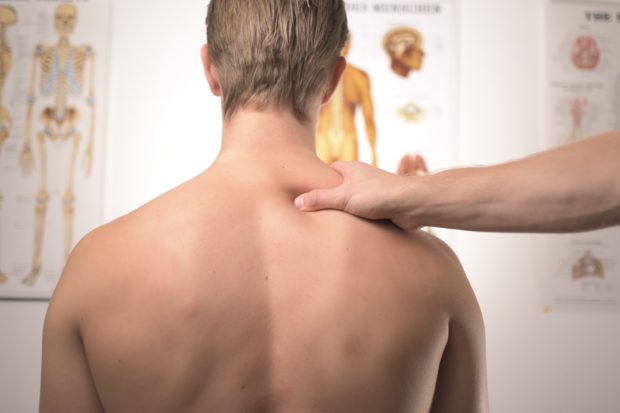Physiotherapy Sub-Specialties: A Summary of Options

Physiotherapy as a health care profession, embraces various treatment modalities such as exercises, heat therapy, massages, electrotherapy, and patient education for treating an ailment, injury, or deformity. Physiotherapy is a treatment pattern that aims at restoring and maintaining a patient’s mobility, function, and overall well-being.
Applying physiotherapy helps through injury prevention, physical rehabilitation, health problems, and fitness. Physiotherapists focus on both prevention and recovery. Physiotherapy has evolved in the form of diverse sub-specialties, which enables physiotherapy to deal with various conditions and peculiarities more effectively and appropriately. Below are some of those physiotherapy sub-specialties and their features or uniqueness:
Orthopedic/musculoskeletal physiotherapy
This sub-specialty deals with repairing and treating the deformities and ailments that are related to the human musculoskeletal system. This specialty in physiotherapy includes correcting the ligaments, muscles, joints, bones, and tendons. Chronic pains, especially those related to the lower back, are caused by the musculoskeletal system being out of alignment in different areas.
Musculoskeletal treatments help you recover muscle strength, reduce pain, increase mobilization, and correct skeletal alignment. So if you have had an injury in recent times that has left you unable to make use of some muscles, or you need to recover muscle strength after a surgery; orthopedic physiotherapy will be your best option at recovery.
Neurological physiotherapy
Neurological conditions lead to extreme loss of balance, muscle weakness, tremors, muscle spasms, loss of function, and decreased sensation. The application of Neurological physiotherapy aims at establishing mobility and treating various functional disorders that affect the nervous system such as head injuries, stroke, spinal and damage, sciatica, multiple sclerosis, Parkinson’s disease, aneurysm, Alzheimer’s, cerebral palsy and neurological balance issues signaled by vertigo.
Most neurological problems are chronic, and they are unlikely to be healed outrightly, but with physiotherapy, a vast positive impact can be made on such chronic problems. Neurological treatments focus on rebuilding correct neural pathways, balance, motor control, and coordination. Neurological physiotherapy also helps in rehabilitation after brain surgery.
Geriatric physiotherapy
This sub-specialty deals with certain age-related medical conditions. As people grow older, many conditions affect them such as cancer, osteoporosis (fragile and brittle bones), arthritis (pain in the joints), joint replacements, Alzheimer’s disease, and balance disorders. Geriatric physiotherapy treatment aims to help: reduce pain, restore mobility affected by old age, work around physical limitations, improve physical fitness, and overall health.
Geriatric physiotherapists guide the aged or elderly about the restriction to specific movements which can aggravate pain and also provide their patients with gait aides to minimize pain and improve overall mobility by employing specific techniques and exercises.
Pediatric physiotherapy
This sub-specialty focuses mainly on the physical needs of toddlers, infants, children, and adolescents with a variety of skeletal, neuromuscular, developmental, or other physical disorders. Childhood is a period when the body grows speedily, and problems in childhood can harm the rest of the person’s life. Pediatric physiotherapy is particularly configured and designed to help babies, children, and adolescents to make the most of their growth, overcome problems, and build a healthy skeletal and muscular strength.
Pediatric physiotherapists help in correcting defects which are present at the time of birth, improve conditions of acute injuries or delayed physical growth. They also help in specific genetic abnormalities such as cerebral palsy (a medical condition which restricts the overall coordination and movement).
- Pediatric physiotherapy treatments help children with:
- cognitive and sensory processing,
- improving their gross and fine motor skills
- alleviating pain, regaining balance
- coordination and normalization of movement
- Regaining coordination, stability, and standardization of movement.
Cardiopulmonary physiotherapy
This sub-specialty deals with the treatment of people with heart problems or blood circulation issues. It specializes in the prevention rehabilitation and compensation of people who suffer from injuries and diseases affecting the heart, lungs, and chest. They help people who have had a heart or a lung surgery with rehabilitation. This sub-specialty also benefits people who suffer (or have suffered) from conditions such as pneumonia, heart attacks, emphysema, hypertension, asthma, and chronic bronchitis.
Cardiopulmonary physiotherapy can help you grow and access strength in crucial muscles and also help you in improving your endurance. Treatments under this sub-specialty include
- Right positioning for optimum lung expansion
- Strategies to help you manage shortness of breath and coughs
- Correct breathing techniques
- Deep breathing and circulation exercises
Women’s health
This sub-specialty in physiotherapy is not very popular around the world like the afore explained. Also called the physiotherapy for women, this sub-specialty addresses main issues related to prenatal care, childbirth, post-natal care, female reproductive system, and problems with infertility.
- Physiotherapists under this specialty assist women with:
- Reducing lymphatic swelling
- Controlling urinary incontinence
- Activating pelvic floor
- Relieving pelvic and hip pain during and after pregnancy
- Strengthening the core
In conclusion, aside from these sub-specialties explained above, some physiotherapists specialize in handling athletes (known as sports physiotherapy) and recoveries (known as rehabilitative physiotherapy). These subs-specialties in physiotherapy help physiotherapists focus on peculiar cases and help patients in the treatment process effectively.

